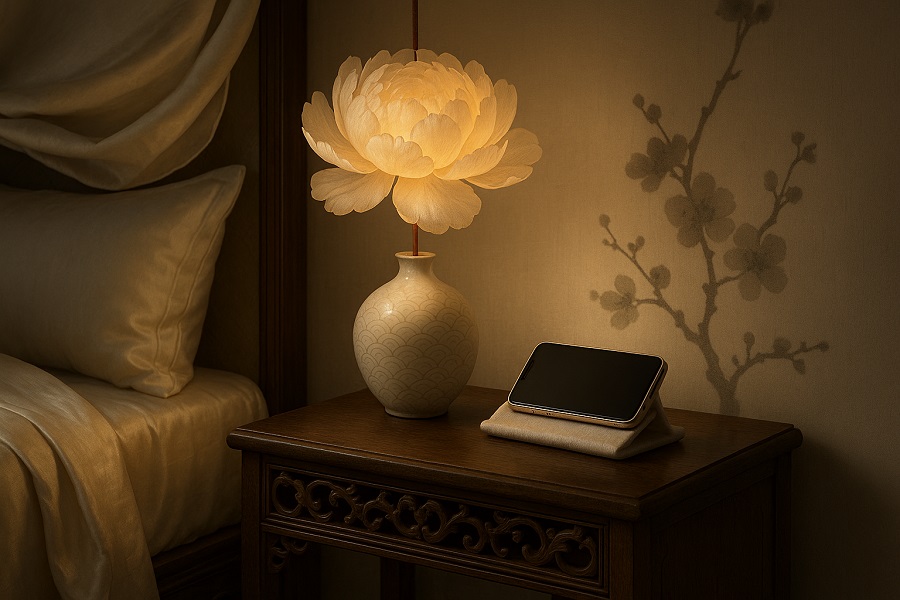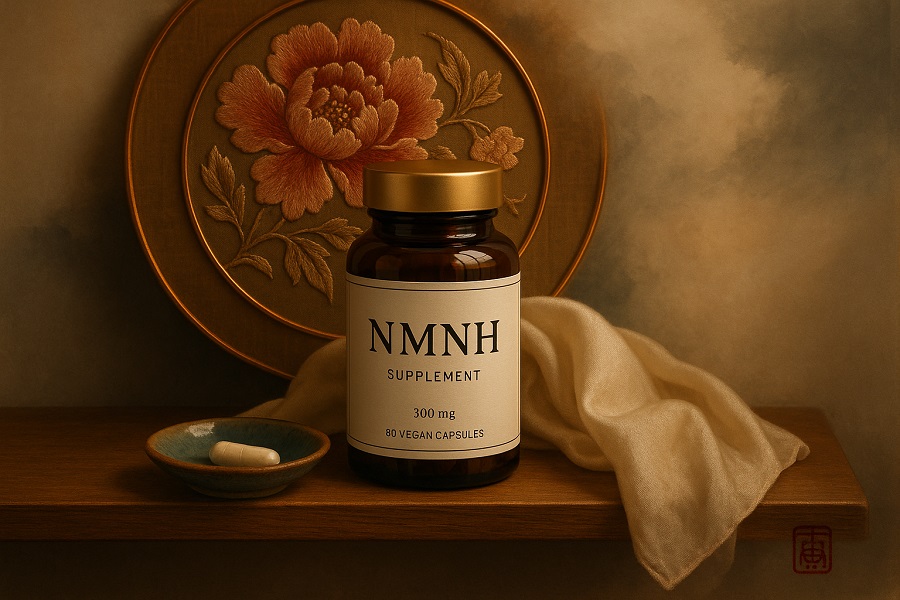Blog
Smart Wellness Homes Design for Healthy Aging – Top 5 Best NMNH,Phones, Safety & Simplicity
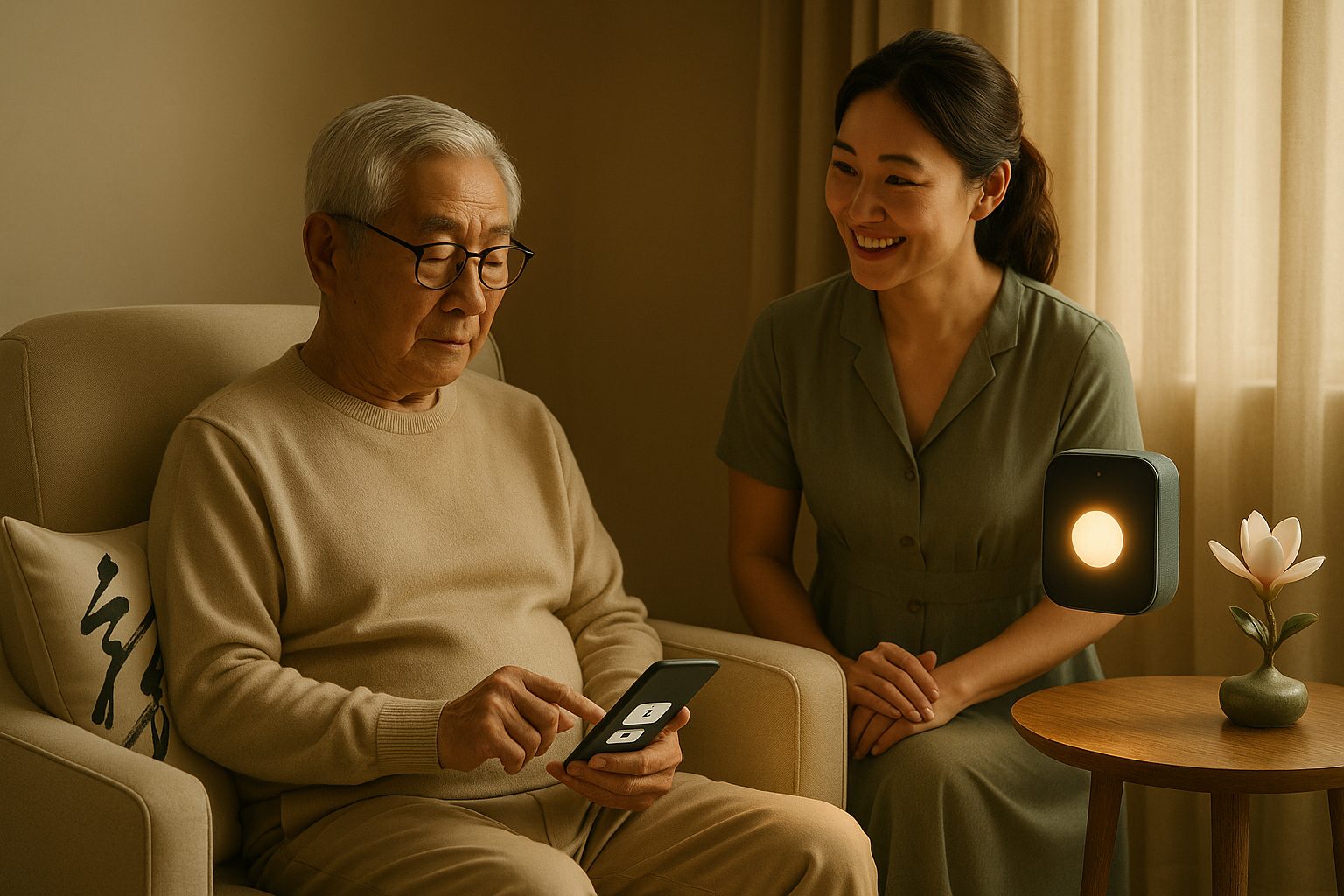
A smart wellness home for an older adult should feel effortless — not like a tech showroom. When you design for aging-in-place, the goal isn’t to buy the flashiest gadgets: it’s to reduce friction, prevent risk, and preserve dignity. That means choosing phones that are easy to use, pairing phones with simple emergency services, and building routines that combine the physical home with smart reminders, gentle aesthetics, and responsible wellness supplements.
A true smart wellness home for an older adult should feel the opposite. It should be effortless, invisible, and deeply human. The goal isn’t to install the flashiest gadgets; it’s to thoughtfully remove the friction from daily life, to anticipate and prevent risk, and above all, to preserve the dignity that is central to a life well-lived.
This isn’t about surveillance; it’s about support. It’s about choosing a phone that feels as natural as a favorite reading glass, pairing it with emergency services that are as reliable as a trusted neighbor, and building gentle routines that weave the physical home together with smart reminders, calming aesthetics, and responsible wellness supplements. It’s technology that recedes into the background, becoming a quiet, steadfast guardian.
In this comprehensive guide, we will walk you through building that reality. You’ll discover how to select the perfect cell phone that feels empowering, not intimidating. We’ll explore practical, elegant ways to integrate that phone with a smart, safe home environment. We will also provide a balanced, clear-eyed primer on the trending world of NMNH supplements—what they are, the science behind the hype, and crucial safety considerations. Finally, we will give you a prioritized shopping and setup checklist you can use immediately to bring peace of mind to your family.
Quick overview: the core components of a smart wellness home
A practical and dignified smart wellness home doesn’t require a complete renovation or a degree in computer science. It relies on three interconnected layers, each designed to be useful and unobtrusive.
- Communication and Emergency Lifeline: This is the foundation. It begins with a phone that is profoundly easy to use—a reliable bridge to family, friends, and, when necessary, immediate help. This layer is active and user-driven; it’s the tool your loved one reaches for to connect with the world. When paired with a one-touch urgent-response service, it transforms from a simple communication device into a pocket-sized lifeline.
- Environmental Monitoring: The Silent Guardian: This layer operates quietly in the background, acting as a set of digital senses for the home. It includes discreet fall sensors that can detect an impact without a camera, simple door sensors that can alert a caregiver if a front door is left open late at night, and next-generation smoke and carbon monoxide alarms that can notify family members’ phones directly. These devices don’t demand attention; they simply watch over the environment, providing a crucial safety net for events that might otherwise go unnoticed.
- Daily Wellbeing and Continuity of Self: This is the most personal and perhaps most important layer. It’s about preserving the rhythms and joys of everyday life. It includes medication reminders delivered by a friendly voice from a smart speaker, automated lighting that brightens pathways at night to prevent falls, and even the optional, responsible exploration of wellness supplements aimed at supporting cellular health. This combination keeps the technology from feeling sterile. The phone is the hub for safety, the home’s sensors quietly monitor for risks, and the wellness elements—from sleep and supplements to light and sound—work in concert to maintain a high quality of life, every single day.
This combination keeps the technology useful and unobtrusive: the phone acts as a pocket-sized hub for safety; the home sensors quietly monitor; and the wellness elements (sleep, supplements, light, sound) preserve everyday quality of life.
Phones for seniors: what matters most
When we evaluate phones for our parents or grandparents, our instincts, shaped by a lifetime of consumer marketing, are often wrong. We look at processor speeds, camera megapixels, and screen resolution. But for an older adult, these specifications are largely irrelevant. The right phone isn’t about power; it’s about clarity, confidence, and control.
The 7 essential phone attributes for elderly users
Forget the spec sheets. Focus on these seven practical attributes that make a genuine difference in daily use.
Simplicity of Interface: A modern smartphone can be a labyrinth of notifications, apps, and nested menus. For someone with declining eyesight or cognitive strain, this is not just frustrating—it’s a barrier.
- Why it matters: A complex interface creates decision fatigue and a fear of “breaking something.” A simple, list-based menu or a screen with a few large, clearly labeled icons removes this anxiety and makes the device an ally.
- What to look for: Large, high-contrast fonts. Clear, descriptive menus (e.g., “Phone Calls,” “Text Messages,” “Photos”). Minimal layers to navigate.
Physical Ergonomics: The physical feel of the phone is paramount. It must be easy to hold, easy to see, and easy to interact with.
- Why it matters: Arthritis can make handling a sleek, slippery smartphone difficult. Limited fine motor skills can turn tapping a tiny icon into a game of chance.
- What to look for: For flip phones, look for large, well-spaced, tactile buttons that provide a satisfying click. For smartphones, seek a large, bright, high-contrast touchscreen and a non-slip case.
Loud, Clear Audio & Hearing-Aid Compatibility (HAC): A phone call is useless if you can’t hear the person on the other end.
- Why it matters: Age-related hearing loss is common. A phone’s speaker must be able to cut through ambient noise without distortion. For those with hearing aids, HAC ratings are non-negotiable.
- What to look for: Front-facing speakers are often louder and clearer than rear-facing ones. Look for a published M/T rating (e.g., M4/T4) for hearing aid compatibility.
Long Battery Life and an Easy Charging Cradle: The deadliest phone is a dead phone. The daily ritual of charging must be frictionless.
- Why it matters: Fiddling with tiny USB-C or Lightning cables can be a nightly struggle, especially in a dimly lit bedroom. Forgetting to charge the primary safety device can have serious consequences.
- What to look for: A battery that can comfortably last more than a full day. More importantly, look for a drop-in charging cradle or dock. This turns charging into a simple, one-handed action: just place the phone in its stand.
One-Touch Emergency Access: In a crisis, there is no time to unlock a screen, find the phone app. Help must be a single, decisive press away.
- Why it matters: During a fall or a medical event, panic and physical limitations can make complex actions impossible. A dedicated, brightly colored emergency button bypasses all complexity.
- What to look for: A physical red button or a prominent, always-on-screen icon that connects directly to emergency responders or a dedicated medical-alert service like Lively’s Urgent Response.
Service Stability and Plan Transparency: Unexpected charges and complicated billing cycles cause stress for older adults and their families.
- Why it matters: Many seniors are on a fixed income. A simple, predictable monthly bill from a reliable carrier is essential for peace of mind.
- What to look for: Plans with clear pricing, no hidden fees, and options for caregiver-friendly billing where a family member can manage the account.
Remote Management Capabilities: The ability for a trusted caregiver to help from afar is a game-changer.
- Why it matters: It prevents a minor issue (like adding a new contact) from becoming a frustrating roadblock for your loved one or requiring an in-person visit.
- What to look for: Features that allow a designated family member to remotely add contacts, check the phone’s battery status, or manage settings through a web portal or companion app.
Lively’s Jitterbug family (Flip2 and Smart4) is an example of devices designed for this use: big buttons or a simplified smartphone layer, loud front-facing speakers, and the option to add one-touch urgent response service and easy charging docks. Plans are promoted as low-cost options for caregivers and families. lively.com
Get the all new Jitterbug Flip2 at Lively, formally Greatcall
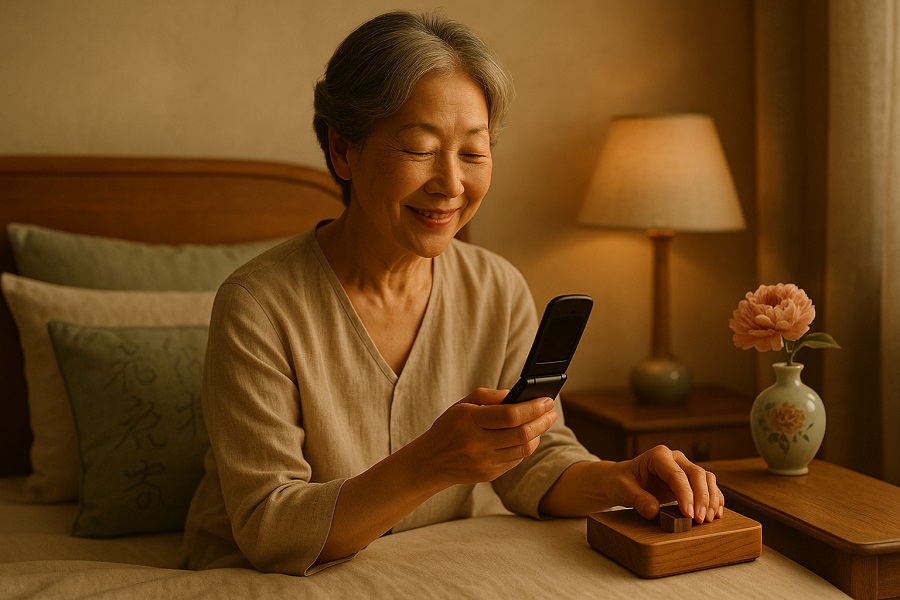
Senior smiling in a warm bedroom, holding an easy-to-use flip phone on a wooden charging dock
Best Phone Categories (and Top Picks for Consideration)
1) Simple Flip Phones — Best for Tactile Ease and Familiarity
Why They Work: For many seniors, the flip phone is not a step back; it’s a return to a more intuitive time. There is a deep, ingrained muscle memory in the simple act of flipping the phone open to answer and snapping it shut to end a call. The large, physical buttons provide unambiguous tactile feedback that touchscreens lack. The menus are minimal by design, drastically reducing the risk of getting lost or confused.
Top Pick : Jitterbug Flip2 – This device is the epitome of the modern, senior-focused flip phone. It features oversized, backlit buttons that are easy to see day or night. A prominent red button on the keypad provides one-touch access to Lively’s Urgent Response agents. The optional charging cradle eliminates the hassle of cables, making it an ideal bedside phone for safety and simplicity.
2) Simplified Smartphones — Best for Bridging the Gap to Modern Features
Why They Work: Many families want their older loved ones to enjoy the benefits of modern technology—video calls with grandchildren, receiving photos, using telehealth apps, or getting medication reminders. A simplified smartphone offers these features but wraps them in a software layer that is forgiving and easy to navigate. Large, single-function icons replace the cluttered grid of a standard smartphone, making the experience feel less like a computer and more like a simple appliance.
Top Pick : Jitterbug Smart4 -This device runs on Android but uses Lively’s unique software to present a simple, list-based menu for all core functions: “Phone,” “Text Messages,” “Camera,” “Internet,” etc. The Urgent Response button is always visible on the screen. It’s the perfect middle ground for families who want to stay connected through video calls while ensuring the user interface remains foolproof and stress-free.
3) Wearables & Connected Pendants — Best for Around-the-House, Always-On Safety
Why They Work: The greatest risk of a phone-based system is that the phone isn’t on the person during a fall. A wearable device—a pendant worn around the neck or a watch on the wrist—solves this problem. It keeps emergency help literally at hand, at all times. When combined with a primary phone, these devices create a layered safety net. If a person falls in the bathroom and their phone is in the kitchen, the pendant becomes the essential fallback. Modern designs are increasingly sleek and discreet, moving away from the stigmatized, clinical look of older models.
Weaving the Tech Together: How to Pair Phones with the Smart Home
A smart phone for a senior shouldn’t exist in a vacuum. Its true power is unlocked when it integrates seamlessly with the home environment, reducing friction and enhancing safety in subtle but powerful ways.
Voice + Phone Handoff: For users with arthritis or limited fine motor control, even a simplified touchscreen can be challenging. Pairing the phone with a smart speaker (like an Amazon Echo or Google Nest Hub) is a transformative step. By linking your loved one’s contacts, they can initiate calls with a simple voice command: “Alexa, call Jenny.” This is more than a convenience; it’s an accessibility feature that ensures they can always reach out, even if they can’t physically operate the phone.
Ritual and Reliability Through Docking Stations: Place easy-to-use charging docks in high-traffic areas, specifically the bedroom nightstand and a kitchen counter. This does more than just simplify charging; it creates a consistent, predictable home for the device. The ritual of placing the phone in its cradle at night becomes as automatic as setting an alarm clock, dramatically reducing the chances that the primary safety device will have a dead battery when it’s needed most. Companies like Lively sell these simple drop-in docks, and their small footprint belies their massive impact on daily routine.
Intelligent Alerts and Graceful Degradation: This is a more advanced concept, but a powerful one. Imagine if a fall is detected by a sensor in the home. Instead of the user’s phone behaving normally, it could automatically switch to a hyper-simplified “emergency mode.” The screen could display a single, massive button that says “I Need Help” and another that says “I’m OK.” This principle, known as graceful degradation, means the system becomes simpler and easier to use when stress is highest. This can be implemented today using caregiver-managed Android launchers or senior-mode apps.
A Caregiver’s Quick Setup Checklist
Setting up a new phone and system can feel overwhelming. Use this prioritized checklist to get the essentials right from day one.
- Program and Label Three Key Speed-Dials: Choose the three most important contacts (e.g., “Daughter – Anna,” “Son – Michael,” “Neighbor – Susan”). Program them into the phone’s favorites or speed dial and, if possible, label them clearly on the screen or with a physical note next to the charging dock.
- Enable and Test the One-Touch Emergency Button: Activate the urgent response service. Then, with your loved one present, run a live test. Explain that you’re doing a test, press the button, and speak to the agent. This demystifies the process and ensures the first time they use it isn’t during a real emergency. It builds confidence and familiarity.
- Install Charging Docks in Two Key Locations: Place one on the bedroom nightstand and one in the kitchen or living room. Show your parent how easy it is to simply drop the phone in to charge. Frame it as the phone’s “home.”
- Pair the Phone to a Smart Speaker for Voice Calling: Connect the phone’s contacts to an Alexa or Google Home device. Practice making a call together using only voice commands. “Hey Google, call David.”
- Subscribe to a Transparent, Family-Friendly Plan: Choose a service plan with no hidden data overage fees or complex charges. If possible, set up the billing so a caregiver can manage it online to avoid confusion or missed payments.
- Create a Simple, Printed “Cheat Sheet”: On a notecard, write down the phone’s three most important tasks in large, clear letters (e.g., “1. To Call Family, Press Here. 2. For Help, Press the RED Button. 3. At Night, Place Phone in This Charger.”). Laminate it and place it next to the primary charging dock.
- Schedule a Weekly Check-in Call/Reminder: Create a recurring calendar event that sends a gentle reminder message to the phone (e.g., “Time for our weekly chat with Sarah!”). This creates a positive, routine interaction with the device and provides a regular opportunity to check that everything is working correctly.
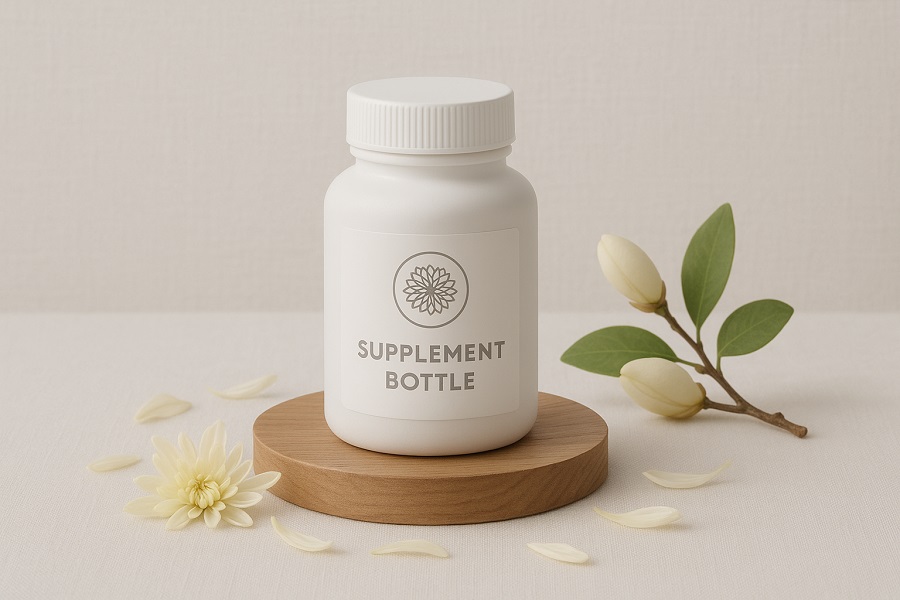
What is NMNH supplement? The best nmnh supplement
NMNH & anti-aging supplements: what families should know
As we focus on extending not just lifespan but healthspan, the conversation naturally turns to wellness and longevity supplements. Products containing NMN (nicotinamide mononucleotide) and its reduced form, NMNH, have surged in popularity, appearing frequently in online marketplaces like Amazon. Manufacturers of products like Mapurwn NMNH and Molorik NMNH market them as powerful boosters with potential “anti-aging” benefits.
For families exploring every avenue to support healthy aging, it’s vital to separate the promising science from the aggressive marketing.
What the science says
Preclinical and in-vitro studies show that reduced forms of NMN (including NMNH) can raise NAD+ levels in cells and animals in laboratory settings, which is why there’s interest in supplementation. Recent reviews note NMNH increases NAD+ in certain models. ScienceDirect
Human clinical evidence is still developing. There are studies for NMN and related precursors that show short-term increases in NAD+ and some markers of metabolic health, but long-term safety and clear clinical benefits in aging humans are not yet established at scale. Health and science journalism and industry coverage emphasize both excitement and caution in this field. Health
Top 5 Best NMNH Supplements for Healthy Aging
Feautre Product : Mapurwn NMNH 500mg

This dietary supplement from Mapurwn features 500 mg of Dihydronicotinamide Mononucleotide (NMNH) per serving. It is designed with the goal of providing a precursor that the body can use for its natural production of .
Manufacturers in this space often associate healthy levels with benefits like cellular energy and metabolic function, which is based on the molecule’s known roles in the body and emerging preclinical research.
Crucial Note: Before considering this or any precursor supplement, a conversation with your loved one’s doctor is essential. It is vital to review potential interactions, especially if they are taking prescription medications (for conditions like diabetes or blood pressure) or have underlying health issues. A doctor can help determine if it is appropriate for their specific health profile.
See Product Details on AmazonFeature Product : MOLORIK NMNH Multi-Ingredient Blend
This supplement from MOLORIK is marketed as a multi-ingredient blend centered around NMNH. It is positioned to support the body’s cellular energy pathways by providing a key building block for .
The product descriptions on platforms like Amazon often highlight the potential for supporting overall vitality, which taps into the broader consumer interest in healthy aging.
Responsible Consideration: The science of longevity is fascinating and fast-moving, but it is not yet settled. When you see claims about “anti-aging,” it’s important to interpret them as marketing language rather than a proven medical outcome. The most responsible step is always to ground your decisions in guidance from a trusted medical professional who understands your family member’s complete health picture.
MEGNETA NMNH Supplement

MEGENETA’s NMNH supplement is marketed for individuals interested in proactive cellular support. The manufacturer references standard manufacturing qualifications and positions the product as an adjunct to lifestyle practices such as balanced nutrition and sleep hygiene. Please consult the product label for active ingredient amounts and confirm any third-party testing prior to purchase.
Compliance & safety note :
Manufacturers’ representations on NAD+ support are marketing claims. Medical consultation is strongly advised before use, particularly for individuals taking concurrent medications or with preexisting medical conditions.
Ashenutri NMNH Supplement
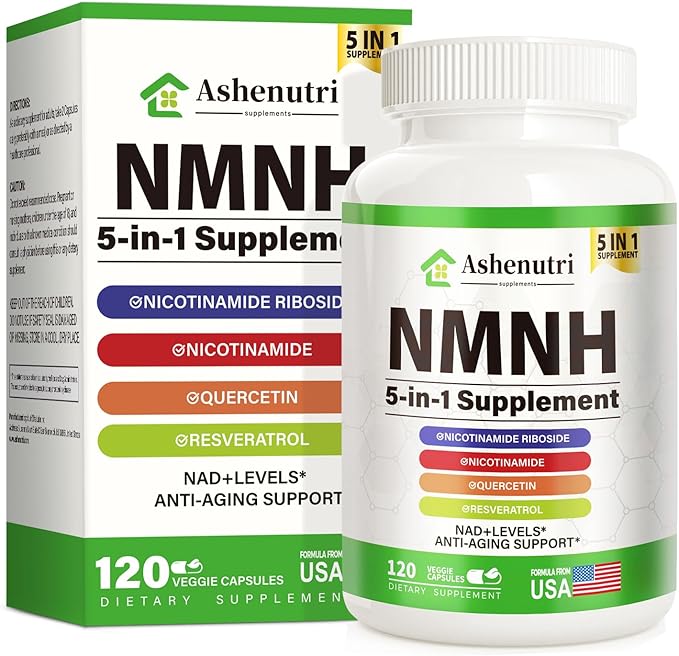
Ashenutri’s NMNH supplement is presented as a high-concentration NAD+ precursor designed for adult consumers interested in cellular energy support. The manufacturer lists the active NMNH ingredient prominently on the label and positions the product for longevity-oriented supplementation routines. Prospective buyers should consult product details and verify third-party testing and ingredient transparency on the Amazon product page prior to purchase.
See Product Details on AmazonToniiq NMNH Supplement

Toniiq’s NMNH offering is positioned toward consumers who prioritize purity and manufacturing transparency. Toniiq frequently underscores independent verification in its marketing, which may appeal to buyers seeking evidence of quality control. As with all NAD+ precursor supplements, prospective users should review ingredient lists and consult with their healthcare professional.
See Product Details on AmazonThe Guiding Principle: Safety First, Supplements Second
While the science of cellular health is exciting, the immediate priorities in creating a wellness home remain firmly rooted in the foundational layers of care: a reliable phone for communication, a safe environment monitored for risks, and the daily connection that preserves dignity and joy.
View these supplements not as a primary solution, but as a potential, future-focused addition to a well-rounded health plan—one that is guided, approved, and monitored by a qualified healthcare provider. This approach ensures that your exploration of new wellness avenues never compromises the fundamental safety and well-being of the person you care for.
Design and UX tips to reduce stigma and alarm fatigue
A crucial barrier to the adoption of aging-in-place technology is emotional. Many older adults fiercely resist devices that look clinical, feel stigmatizing, or make them feel like a patient in their own home. A blinking red light doesn’t just mean “low battery”; it can feel like a constant, nagging reminder of vulnerability. Thoughtful design and user experience (UX) can solve this.
- Make Devices Look Like Furniture, Not Equipment: Choose charging docks and sensors that blend into the home’s decor. Look for options with soft curves, matte finishes, or even wood accents. A device that looks like a small, elegant bedside ornament is accepted; a piece of gray, clinical plastic is rejected.
- Tone Down the Alerts to Reduce Alarm Fatigue: Not every notification is a five-alarm fire. A smart wellness system should use tiered alerts. A gentle, pleasant chime can serve as a medication reminder. A slightly more insistent tone might signal that the front door has been open for ten minutes. A loud, unavoidable alarm should be reserved for true emergencies, like a smoke alarm or an urgent response activation. This prevents “alarm fatigue,” where constant, unnecessary alerts cause the user to start ignoring them altogether.
- Use Narrative Framing for Health Data: Instead of presenting a loved one with a sterile list of metrics , frame the information as a positive, daily “health story.” An app or a smart display could say, “Good morning! You had a solid night’s sleep and a great walk yesterday. Today looks like a wonderful day to call Sarah.” This positive, narrative framing reduces anxiety and encourages long-term engagement.
- Blend Sensors with Craft and Creativity: Hide sensors in plain sight. A small motion sensor can be concealed inside a beautiful vase. A door sensor can be painted to match the door frame. A fall detector might be integrated into a bathmat. By removing the “clinical” look of the technology, you remove the stigma associated with it. Just be sure to document the locations of these hidden sensors for battery changes and for emergency responders.
Conclusion: Technology in Service of Life
Building a smart wellness home for someone you love is not a technical project; it is an act of profound care. It is about thoughtfully choosing tools that empower, not encumber. It is about designing a system so seamless that it becomes an invisible layer of support, quietly working in the background to foster safety, connection, and independence.
It begins with a phone that feels like a friend. It expands into a home that is gently aware of its occupant’s needs. And it is sustained by a philosophy that prioritizes dignity above all else. By focusing on removing friction and preserving the familiar rhythms of life, we can use technology not to manage decline, but to celebrate and extend a life of purpose and peace of mind—for them, and for ourselves.

FAQ
Q: What is NMNH and how does it differ from NMN?
A: NMNH is a reduced form of nicotinamide mononucleotide (NMN) that some manufacturers promote as an NAD+ precursor. Research into NAD+ metabolism is active and evolving; while preclinical models show changes in NAD+ dynamics with precursors, human evidence on long-term clinical benefits and safety remains limited. Frame any explanatory copy on your site as educational, not prescriptive.
Q: Are these supplements safe for seniors or people on medication?
A: Safety depends on individual health status and concomitant medications. Older adults and persons taking prescription drugs should consult their healthcare provider before initiating any new supplement.
Q: How to keep an elderly parent safe at home when they are alone?
A: Prioritize layered protection: (1) choose an easy-to-use phone with one-touch emergency (e.g., a Jitterbug style device) and a charging dock in a fixed location; (2) add passive environmental sensors (bed/chair occupancy, smart smoke/CO, door contacts) and a fall mat or wearable pendant; (3) schedule automated reminders (medication, hydration) via a smart speaker; and (4) set a simple caregiver check-in routine. Combine technology with small behavioral changes — clear pathways, non-slip mats, and a weekly safety audit — for the greatest reduction in risk.
Q: What is the best way to monitor an elderly parent remotely without being intrusive?
A: Use non-camera sensors and aggregated summaries: motion sensors, door sensors, smart plugs and bed-pressure mats report activity patterns without live video. Configure notifications for meaningful deviations (missed medication, long inactivity) and send human-friendly alerts (e.g., “Dad missed his 9am meds”) rather than constant pings. Always inform the parent about what’s monitored and provide simple opt-out controls to preserve dignity.
Q: What technology helps seniors live independently longer?
A: Helpful tech is unobtrusive, reliable and easy to use: simplified phones with urgent response, voice assistants for reminders and calls, fall detectors and pendants, and smart home automations (auto lights, timed thermostats). Pair these with remote caregiver dashboards and scheduled health check calls to enable independence while keeping safety nets active.
Q: Are there non-stigmatizing medical alert options for parents?
A: Yes — modern medical alert options include wearables that look like watches, pendants disguised as jewelry, or home hubs styled as decor. Choose solutions that offer both wearable and home-based fall detection and that allow the user to control when they wear or charge the device to avoid stigma.
Q: What is a practical checklist for reducing fall risk at home for seniors?
A: A simple fall-risk checklist: remove loose rugs, install grab bars in bathroom, add night lights to hallways, secure loose cords, arrange frequently used items at waist height, use non-slip mats, tape down thresholds, and place an easy charging dock for the phone near the bed. Pair physical fixes with a wearable/pendant and a bedside fall mat for layered fall protection.
Q: Jitterbug Flip2 vs Jitterbug Smart4 — which is better for seniors?
A: Choose the Flip2 if tactile simplicity, large buttons and minimal menus are primary needs — it’s ideal for users who mainly call and require one-touch urgent response. Choose the Smart4 if you want video calling, larger on-screen text and app-based medication reminders while retaining senior-friendly UI. Match the model to the user’s tech comfort level and need for smartphone features.
Q: How to set up Alexa so an elderly parent can make phone calls easily?
A: Steps: (1) Create or link a household Amazon account and install the Alexa app on a caregiver phone; (2) add the parent as a contact and enable “Drop In” permissions if acceptable; (3) pair Alexa to the parent’s preferred calling method (Alexa-to-phone or Echo-to-Echo); (4) create simple voice routines such as “Alexa, call Anna” and test repeatedly; (5) pin a paper cheat sheet next to the device with the exact voice phrase.
Q: What is the easiest cell phone for someone with arthritis?
A: Prioritize large physical buttons or a very responsive touchscreen with oversized UI and voice control. Flip phones with large tactile keys, large-font smartphone launchers, and charging cradles that eliminate fiddly cables work best. Also consider stylus-friendly screens or voice dialing to reduce finger strain.
Q: Which charging dock phone for seniors is recommended?
A: Look for a low-angle cradle that supports drop-in charging, has non-slippery base, and clear LED power indicators. Docks that hide cable connectors and provide a tactile guide for placement reduce frustration. If the phone manufacturer offers a branded dock (e.g., Jitterbug compatible cradle), that’s often the most reliable choice.
Q: How do I test a Lively / Urgent Response button to make sure it works?
A: Follow these steps: (1) Read the device manual for test procedures; (2) trigger a non-emergency test call while on the line with the monitoring service number; (3) confirm the operator receives the alert, hears the voice channel, and follows escalation instructions; (4) test battery backup and cellular signal strength in different rooms; (5) document the test result and schedule regular monthly checks.
Q: Are NMNH supplements safe for older adults?
A: NMNH is an emerging NAD+ precursor with early laboratory and preliminary human research suggesting it may raise cellular NAD+ markers. However, long-term safety and consistent clinical benefit in older adults remain incompletely established. Seniors — especially those on multiple medications or with chronic conditions — should consult their physician before starting NMNH or similar supplements. Always present manufacturer claims as marketing language and include a medical disclaimer.
Q: What should I know about NAD+ boosters and aging parents?
A: NAD+ boosters (NMN, NMNH, NR) target cellular metabolism and are marketed for energy and longevity support. Consider three practical points: (1) evidence is evolving — not definitive; (2) supplement quality and purity vary widely — prefer brands with COAs or third-party testing; (3) discuss potential drug interactions and baseline labs with a healthcare provider before starting supplementation.
Q: What should I know before buying anti-aging supplements for a parent?
A: Verify ingredient transparency (exact mg per serving), third-party testing (COA), manufacturing standards (GMP), and clear dosing instructions. Factor in medication interactions, cost, and the parent’s ability to adhere to dosing. Prioritize clinical consultation over marketing claims.
Q: How can I combine smart home tech with senior wellness routines?
A: Use tech to scaffold routines: program smart speakers for medication and mobility reminders, integrate phone alerts for hydration and appointments, and automate lighting and temperature to support sleep and activity. Pair automated prompts with human check-ins to keep routines social and accountable.
Q: How to integrate a phone with a smart home for an elderly user?
A: Integration pattern: pair the phone to a home Wi-Fi and a primary smart speaker; enable phone-to-voice call handoffs; connect medical alert services via the carrier or third-party hub; and configure routines that forward critical events (fall detected, missed meds) to caregiver phones and dashboards. Ensure remote management permissions so caregivers can update contacts and settings.
Q: How does voice-activated emergency calling for seniors work?
A: Voice-activated emergency calling uses wake words and configured routines to place a call to a contact or monitoring service. For reliability, combine voice activation with one-touch hardware buttons and wearable pendants — voice should be a complementary channel, not the only emergency path.
Q: What is the best phone and fall detector combination?
A: Combine a simplified phone with one-touch urgent response plus a dedicated wearable fall detector or bed/ mat sensor. For many households, a Jitterbug-style phone plus a pendant with automatic fall detection balances usability and coverage. Ensure both devices are registered to the same emergency contact and test integration regularly.
Q: How do I create a senior safety ecosystem at home?
A: Build a layered ecosystem: (1) primary communication device (easy phone + charger), (2) personal protection (pendant/wearable + urgent response plan), (3) environmental sensors (smoke, CO, door, bed), (4) assistive automations (voice reminders, lights), and (5) caregiver management (remote access, scheduled check-ins). Document procedures, run regular tests, and maintain a clear emergency plan visible in the home.
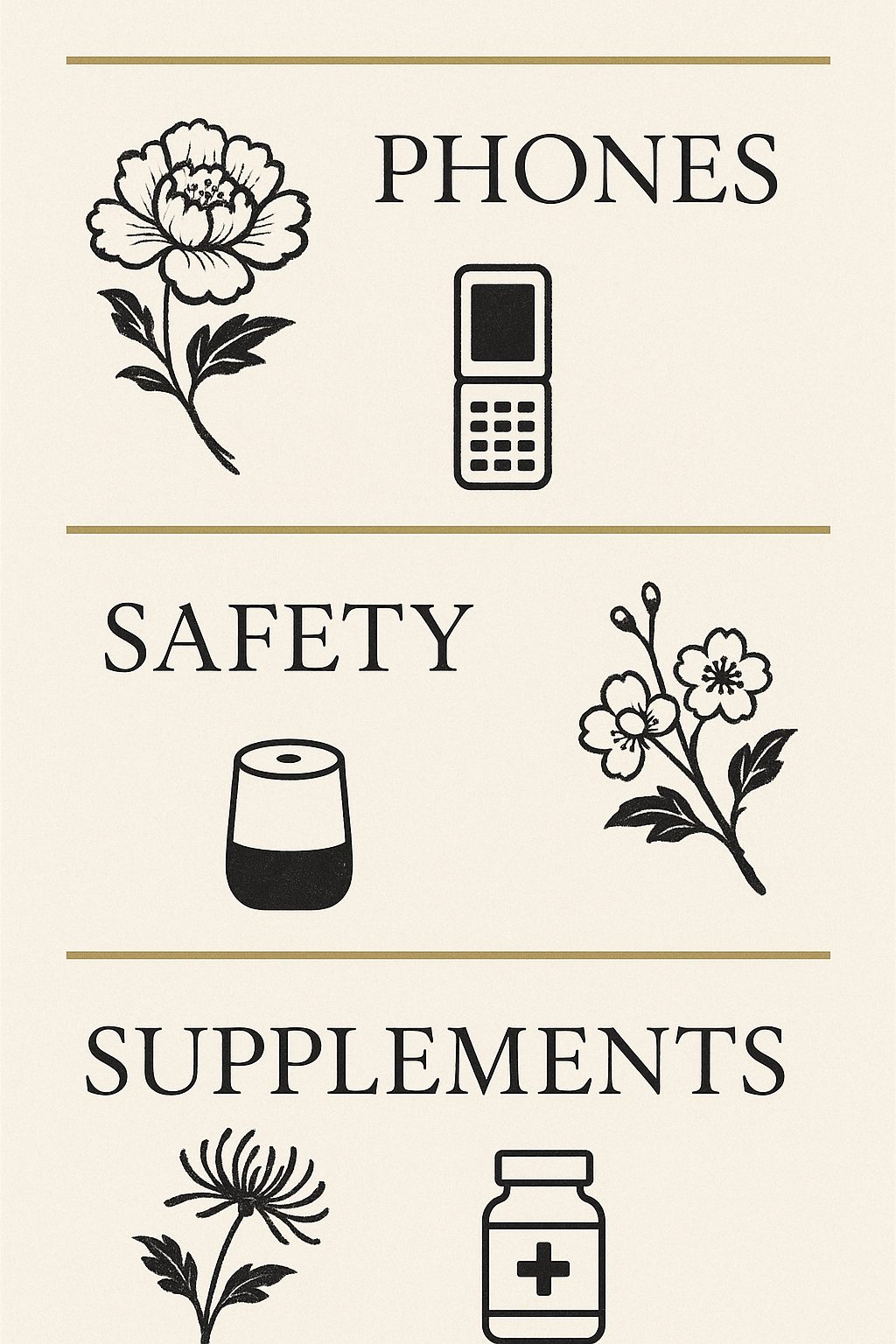
infographic smartwellness pin elegant infographic design
Medical disclaimer : This article is informational only and is not medical advice. Supplements are not FDA-approved treatments for aging or disease. Talk to your healthcare provider before starting any new supplement regimen.



